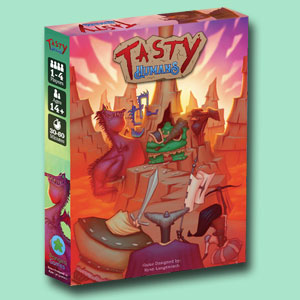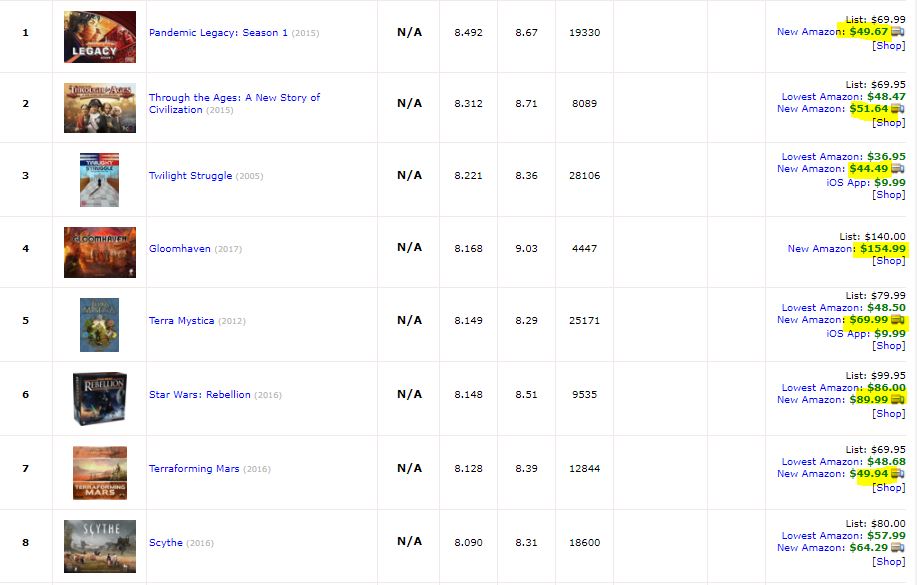How to Work Alone in the Board Game Industry
In order to self-publish a board game, you will have a lot of responsibilities. These responsibilities include marketing, sales, fulfillment, accounting, and…oh yeah…designing the game. It is a lot to organize and do no matter how many people are involved. Some people find it most effective to work in teams and some people prefer working alone. Famously, I fall into the latter category.
Looking for more resources to help you on your board game design journey?
Here you go: no email required!
Like this writing style?
Check out my latest blog on marketing here.
I’ll be making a post about dealing with team dynamics in the near future, but for the time being, let’s just talk about what it’s like to work alone in the board game industry. I want to give you a feeling for what’s it’s like to manage a company of one from firsthand experience.

There are a lot of advantages that come with working alone. You get complete creative control. On contentious decisions, you always get to make the final call. You can be completely agile in your decision-making – quitting something old or starting something new whenever you feel like it. There is no need to negotiate or ask for permission. When it comes to money, you walk away with all the profits if you work alone.
Of course, working alone comes with its fair share of downfalls, many of which are absolutely devastating if you are not ready for them. The immense solitude of working alone can degrade very easily into loneliness. There is no one to run your ideas by. No one will call you out on your character flaws or errors in judgment. No one to proofread your work. There is no one to hold you accountable. There is no one to lean on for emotional support. On top of all this, there are so many demands.
It’s a real mixed bag. I’ve learned a lot about maximizing the good and minimizing the bad over the last couple of years. I’ve got lots of little pieces of advice for you if you choose to go the solo developer route. If you don’t, you’ll probably still find them insightful.
Make wise use of your creative control. Working alone lets you pursue passion projects that other people wouldn’t care about as much. This can be good and bad since unchecked passion may or may not appeal to customers, depending on how you present it. If you ground yourself in pragmatic concern for what gamers like, though, you’re free to do what you want and make money doing it. If you have a clear sense of what you’re trying to accomplish, there is nothing stopping you from going in that direction. You just have to make sure you are using your creative control wisely to achieve those objectives.
Use your ability to make clean, quick decisions to your advantage. This is by far the biggest advantage that any solo developer can have. There is no groupthink and no meetings eternally dragged out by hemming and hawing over possibilities. There is no analysis paralysis, except by your own hand. A solo developer can think fast and turn their business strategy on a dime if needed. If you have a good sense of judgment, valuable data, and the readiness to make a quick decision, this can be beneficial. If you have problems making clean, quick decisions, then you will lose one of the primary advantages of working alone.
Learn about business accounting and personal finance since you’ll be handling all the money. I’ve talked about how it’s expensive to create games. Since you’ll be shouldering that burden alone, I strongly recommend you get good at business accounting so you don’t make reckless decisions with your own money. I also recommend you take care of your personal finances so that you can make good use of the sales money, if you get it, when it comes in. There is hardly a distinction between company profits and personal revenue when you work alone, so it’s really important that you be rigorous about accounting.
Find people to run ideas by. Want to know a hard truth? You cannot realistically evaluate the feasibility of your own board game ideas. You can’t evaluate the logistics and you can’t evaluate the economics alone. Sure, you can get a bunch of data and compile into a spreadsheet, but you risk codifying your own mental biases into a formula that looks nice and has a sheen of truthiness. That means having others you can rely on – friends, family, play-testers, social media followers – is critical.
You may function well as a solo developer, but you will not function well as an island. Our brains were made to make snap emotional judgments that helped us find food and safe places to sleep way back in the hunter-gatherer days. That’s why you need someone who doesn’t have a strong emotional stake in your success to mitigate your passions. This problem can still hit teams, but it doesn’t hit them quite as hard.

Find people who will check your work and give you honest negative feedback. A crowd at large may help you vet ideas in the earliest, most high-level stages, but they won’t help you refine them. You need good play-testers and good friends of your business who are willing to look at the details and help you. That means you need to meet people online or at cons. One of the great sorrows of working alone as a game developer is that your ability to play-test and refine is limited by the lack of different opinions.
Make yourself accountable to somebody or something. I have the hardest time getting out of bed when the alarm goes off at 6:30, but I don’t have the same trouble running 4-5 times per week or publishing 2 blog posts per week. What gives? If I stumble on my blog post schedule, somebody’s going to notice. Somebody will call me out on social media because they know my schedule. Likewise, while nobody cares about my workout routine, I log all these runs in Runkeeper. I’ll feel like a doofus if I open up the app one day and see a big drop off in my weekly mileage. Waking up when the alarm goes off, though, is low stakes because nobody’s watching, nothing is being tracked, and nobody would call me out unless I showed up to work after 8:00.
If you work on a team, you have deadlines that you have to meet. If you work alone, you’re the only person you have to answer to. Because we all suffer from internal biases, we like to imagine ourselves as being more consistent than we are so we let ourselves off easy when we don’t meet the deadline. My advice to you, should you go into solo game development, is to either track your progress or attract a crowd. Either one will keep you on your toes.
Delegate to freelancers. Even if you do everything yourself, you don’t want to do everything yourself. When it comes to art, certain types of marketing, and other specialty jobs, you should feel comfortable hiring some help if you need it and you’ve got the cash. Your most limited resources as a solo game developer are time and energy. You can come into more money, but you’ll never have more than 24 hours in a day. As far as energy goes, even wise lifestyle choices regarding sleep, exercise, a healthy diet, and good time management will only buy you so much time before you slip into tired mode.
Use automation where it makes sense. Lastly, if you work alone, computers become your friend. You can pay $10/month for Buffer to schedule your social media. You can make a spreadsheet to identify weaknesses in your business so decision-making isn’t so time-consuming. If you’re really tech-savvy, you can write batch jobs and Python scripts to do repetitive digital tasks. If you can save time without cutting corners through wise use of technology, you should do it. Always remain open to learning new computer tricks.
Personally, I feel like working alone is a blast if you have the right mindset going in. It’s not for everyone, though. I hope this article has given you a clearer idea of what to expect if you’ve considered working alone.
As always, feel free to share your thoughts in the comments below. Particularly, I’m interested to see if you have an interesting anecdote about working alone.













